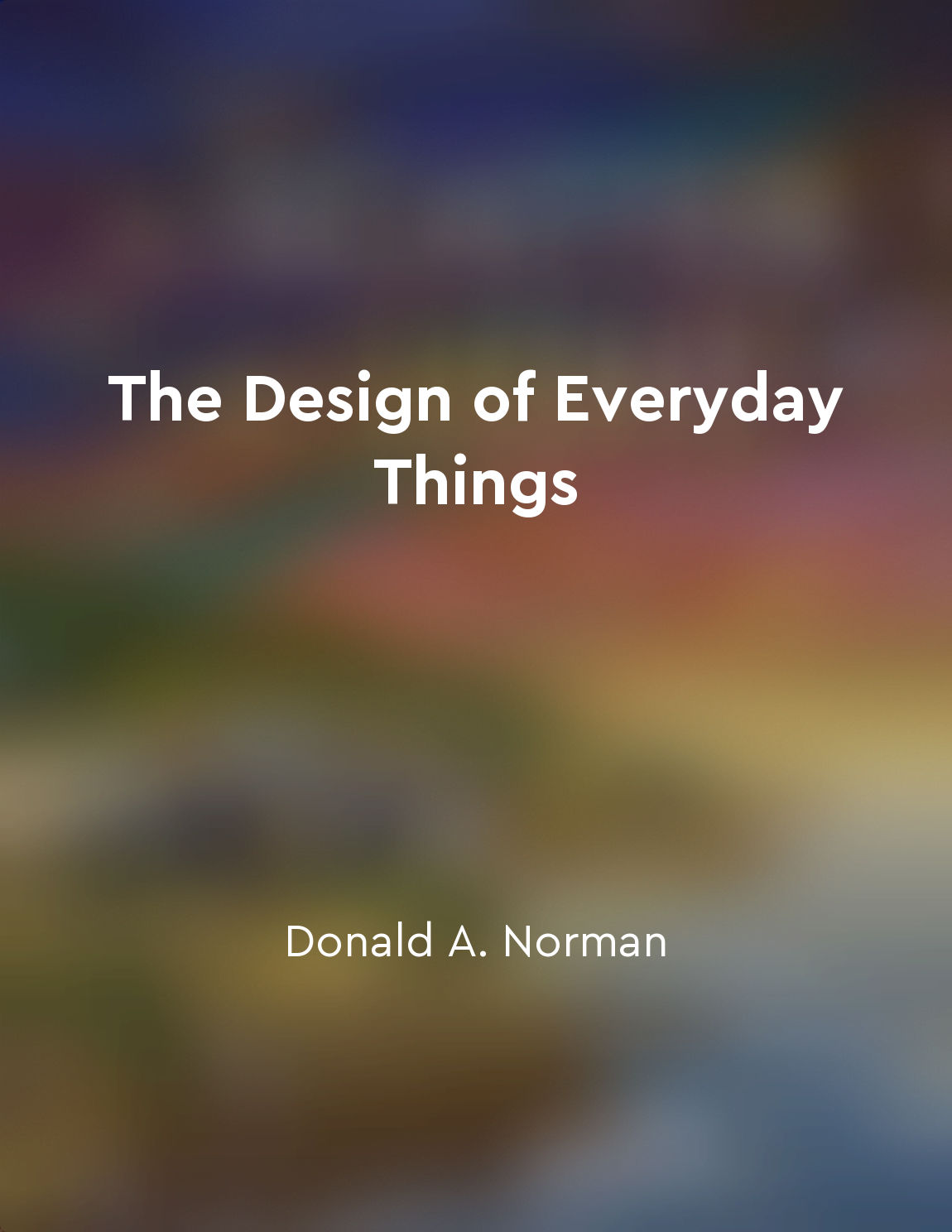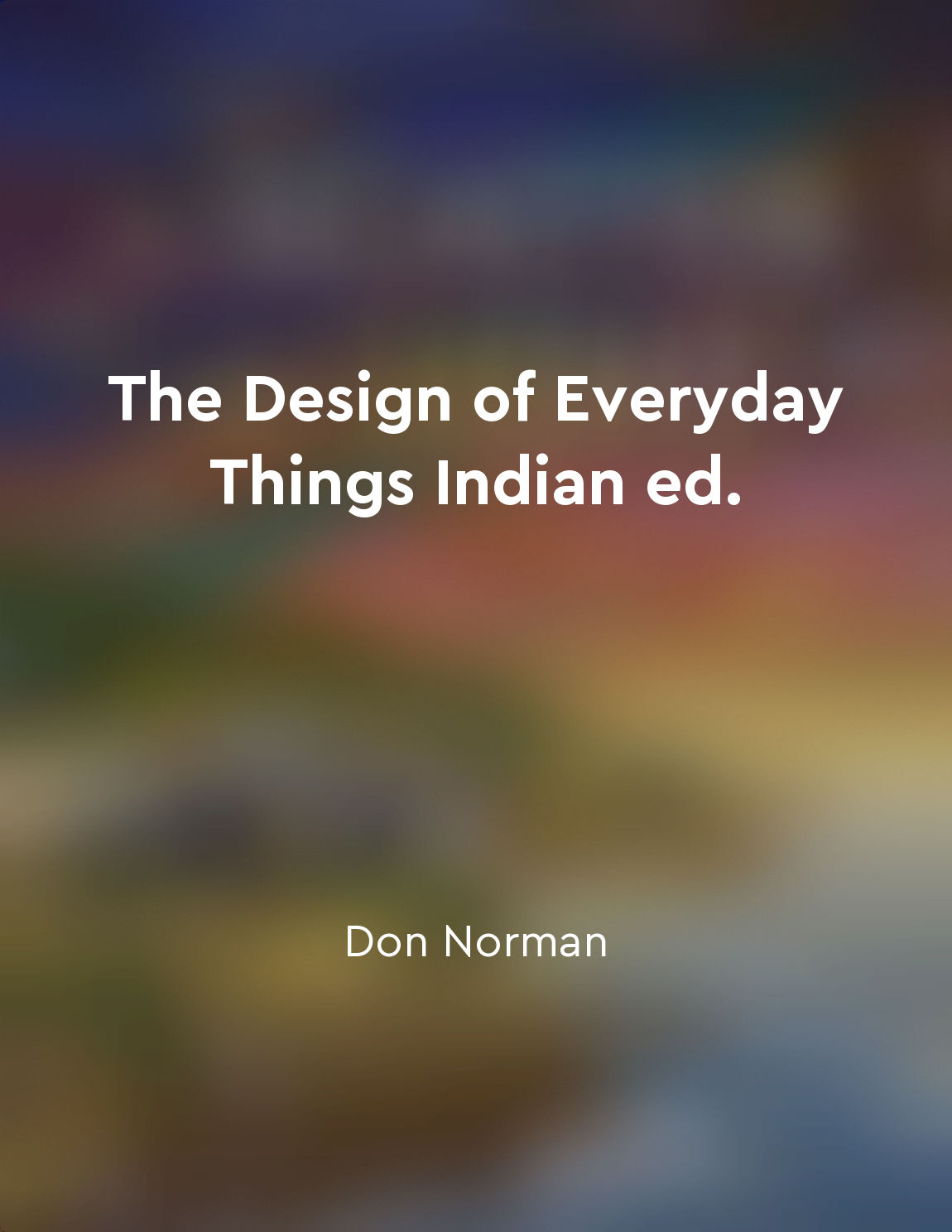Knowing the state of a system is essential for user interaction from "summary" of The Design of Everyday Things by Don Norman
Knowing the state of a system is essential for user interaction. When users are interacting with a system, it is crucial for them to understand what is happening at any given moment. This knowledge allows users to make informed decisions and take appropriate actions based on the current state of the system. Without this information, users may become confused, frustrated, or make mistakes that could have been easily avoided. Imagine a situation where a user is trying to perform a task on a computer, but the system does not provide any feedback on whether the task has been completed successfully or not. The user is left in the dark, unsure of what to do next or whether they need to try again. This lack of feedback can lead to uncertainty and anxiety, making the interaction with the system a frustrating experience. On the other hand, when a system provides clear and timely feedback on its state, users can proceed with confidence. They know what to expect and can adjust their actions accordingly. For example, a progress bar that shows how far along a task is can help users estimate how much longer they need to wait. This simple visual indicator can make a significant difference in the user experience. In the design of everyday things, it is important to consider how to communicate the state of a system effectively to users. This can be done through visual cues, auditory signals, or tactile feedback, depending on the nature of the system and the preferences of the users. By providing feedback that is clear, consistent, and easy to understand, designers can enhance the usability of a system and improve the overall user experience.- Knowing the state of a system is essential for user interaction. By keeping users informed and empowered, designers can create systems that are intuitive, user-friendly, and ultimately more satisfying to use.
Similar Posts
Introduction to the principles of graphic design
Graphic design is a complex and multifaceted discipline that requires a deep understanding of various principles to create effe...
Designers must understand user emotions
Designers who aim to create successful products must delve into the realm of user emotions. Understanding how users feel when i...

Embrace feedback as a tool for growth and improvement
Feedback is an essential component of the innovation process. It allows us to understand how our ideas are being received by ot...

Usercentered design is essential for success
User-centered design is a crucial factor in the success of any product. By focusing on the needs and preferences of the users, ...
Habitforming products foster a sense of ownership
As users invest time and effort into a product or service, they form an attachment that deepens their connection to it. This se...
Emotions play a key role in design success
Design is not just about functionality - emotions play a crucial role in determining the success of a product. While it is impo...

Feedback helps users understand the system
Feedback is an essential element in the design of any system, as it provides users with valuable information about the system's...
Design should prevent errors from occurring
Design should prevent errors from occurring. This is a fundamental principle of good design. Errors are bound to happen, no mat...

Good design is easily understood and intuitive
Good design is about simplicity. It is about making things easy to understand and use. When something is designed well, it shou...

